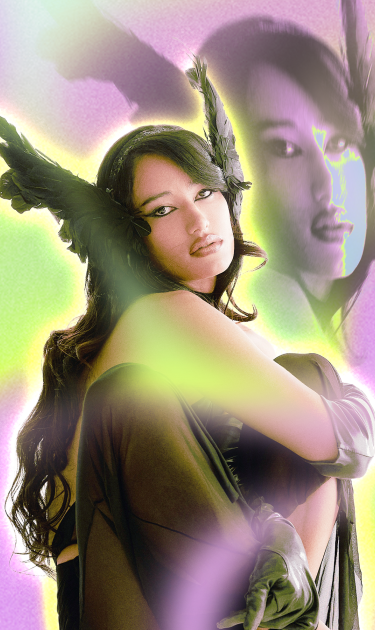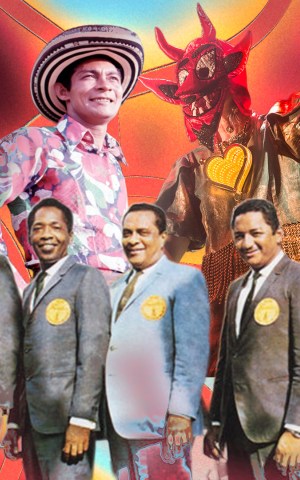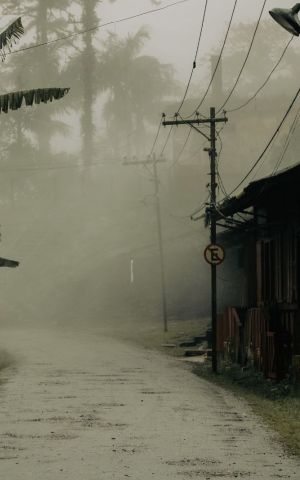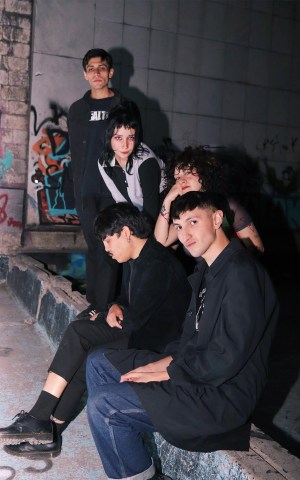With three solo albums under her belt and one album with her band Os Amantes, Jaloo changed her legal name to Jade Melo in 2024. “You know you’re one of us, right?” Jaloo recounts hearing from her trans friends before transitioning herself. “Yeah, I know,” she’d respond, then fully presenting as a man, or a bofão (Brazilian slang for a very handsome man), as she describes her former self. While adopting a unisex stage name and connecting with LGBTQ+ audiences since the start of her career in 2010, it was only around the 2020 pandemic that the Brazilian singer, songwriter, and producer started her feminization process. “When it’s time, you just know,” Jaloo tells Remezcla. “In my life, a lot of things would always go one direction or another because of timing, either mine or other people’s. So I said to myself, ‘It’s time.’”
Transitioning is already an intense endeavor, but the stakes are higher while doing so in the public eye. But for Jaloo, to whom the alchemy of creating personas and channeling feelings into art is routine, that period of her life was also one where she found creative ways to deal with it. “I created a character that didn’t show their face,” she explains. “People thought it was a purely artistic decision, but I was actually protecting myself too. And I think I was able to protect myself very much.” On Instagram, Jaloo posted mostly memes, some of which sparked confused reactions from her followers. “Many people wondered, ‘Is she going crazy? Did she give up her music career?’” During that time, Jaloo also created the drag king Amado, wearing fake moustaches to perform. “My drag is a man, how cool is that?”
It was Jaloo’s way of living her transition in private. Behind the depiction and the memes, there was a woman not only feeling all kinds of emotional turmoil, but also feeling ugly. “Hormone therapy is so hard at the beginning. You feel lost, you feel so many things that you can’t explain. I also got a laser treatment all over my face, and I felt like I was looking horrible,” she shares. But as she tried to balance change and self-preservation, Jaloo did not want to make a story out of her gender transition. “We are all survivors in this world, and who am I to say how people should or should not deal with their lives?” she says. “Nowadays, I often tell trans girls, ‘Hold on. The beginning is hard, but soon you’ll become the butterfly that you are.’”
Gender is only one part of a person’s existence, and in Brazil, it is rarely the only factor that hinders the construction of a sustainable, nationwide music career. Being an artist from the neglected and often stereotyped Amazon forest region in Northern Brazil comes with its own challenges. Not only does it take a figurative and literal high price to reach the musical heartland in the distant Southeast, but it also imposes additional obstacles to being seen and respected by Brazilians themselves. “People used to look at us [Northern artists] as if we’re animals: colorful, exotic, moving our bodies in [peculiar] ways. But what I find smart about us is that we take advantage of this, and we grab the protagonism in our hands.” Jaloo believes this shift happens through music itself, but it’s also a structural change. In June 2025, she was invited by cultural producer Ane Oliveira from the State of Pará to perform at São Paulo’s biggest free music festival, Virada Cultural, in the first-ever session dedicated to artists from the North/Amazonian region. The lineup featured names like Jaloo’s longtime idol and music collaborator Gaby Amarantos and the sound system DJ collective of Tudão Crocodilo. “Change is happening because it’s happening through the artists, the bookers, the producers. I’m very happy to see us taking control,” she says.
“Change is happening because it’s happening through the artists, the bookers, the producers. I’m very happy to see us taking control.”
As for the music, incorporating rhythms and musical elements from the genre of Pará and the overall Amazon region comes naturally to Jaloo. “I never intentionally decided that I would want my music to sound like I’m from where I’m from,” she says. But it does: the percussion beats of carimbó are played in drum kits in “Chuva;” the guitar riffs and hi-hats of Banda Calypso’s “Loirinha” are emulated in the synths of “Quero te ver gozar;” the brega hook of Edilson Moreno’s “Lamazon” is interpolated in “Pa Parará.” “I produce music on my computer, it’s a very electronic process, but [the inspirations] are ancestral, indigenous, and often organic,” she says. Jaloo experiments with electronic dance music and her birthplace’s crafted genres, as if she’s some sort of Amazonian Arca. Her music is heritage and innovative at the same time.
“Music production can take many ways. My chosen path is synthesizing sounds. When I produce, I take the role of a goddess,” Jaloo explains. “And once I discovered how powerful that can be, to manipulate sound to convey emotion, it became almost like a drug. I can’t live without creating, I need that to have control over something in my life. It’s priceless.”
That control stretches beyond the music itself. From concept to visuals, Jaloo takes part in shaping every detail of her albums — like the masculine aesthetic of her second album and the gloomy vibe in her third album’s cover, where she appears naked — is intentional. The trilogy she’s built over the years connects life’s cyclical themes, such as death, orgasm, and rebirth. Her MAU tour is a final performance of this conceptual arc. In the concert, Jaloo plays all three records in full before she moves onto a new creative era.
“I’m privileged to live off music. As LGBT people, the world does not open many doors for us. But art does,” she says.




